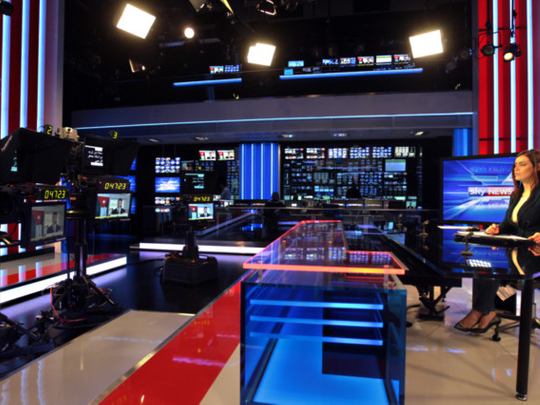
Dubai: Put on the TV and pick up that remote. By the time you start surfing, a new channel could well be on its way onto your screen. It does seem that broadcasters, on their part, are not about to hit the “pause” button as they scramble the air waves to get a lock on as many viewers as possible.
In recent weeks and months, new channels were launched – Zee TV added to its Arabic language offering and plans to do more and so did the regional pay-TV operator OSN – while Viacom’s Indian operations continued to extend their channels’ – MTV India followed Colors – reach to tap the South Asian diaspora in the Gulf.
Meanwhile, global majors, CNN and Sky, continue to leverage the sizable investments they have made on the ground in the UAE by way of state-of-the-art broadcast centres to pull in a committed viewership for their newscasts.
While seeking traction on viewer numbers, broadcasters also have their eye on the main prize – the substantial growth rates in ad-linked revenues flowing onto regional channels. Based on estimates by Pan Arab Research Centre (Parc), spend on TV ads — satellite and terrestrial — last year across the region were estimated at $11.8 billion (Dh43.3 billion) against $9.25 billion in 2011. (These estimates are based on the official ad tariff cards put out by broadcasters and industry sources say that TV ad rates have been raised in the last year, in some cases quite substantially.)
More to the point, industry sources are unanimous in stating there is more coming in. Regional economies are on the mend, with some of the key sectors — retail, automotive, airline and hospitality — once again putting out high growth numbers. These sectors, in turn, are scaling up their presence and TV remains a favoured medium. A case in point is Qatar Airways last September launching the next phase of its multimedia campaign on CNN by taking up exclusive cross-platform sponsorship of the weather scrolls across the network’s feeds and online sites. This sponsorship builds on an eight-year relationship with CNN International.
“Our local presence editorially has allowed us to offer more regionally focused and relevant programming, but has equally created sponsorship opportunities for regional clients that are interested in associating themselves with this content,” said Phil O’Sullivan, Abu Dhabi bureau chief, CNN International. “The real catalyst for any increase in regional advertising interest for us has been the expansion of our commercial operations. The Middle East continues to be a key growth market for CNN.”
Apart from the extensive reach that a commercial can get a brand and its advertiser, social and cultural dynamics are in play in the hold that TV has on the region’s audience. It remains largely intact even against the competing forces unleashed by digital media platforms, which in some of the Western markets is leading to a perceptible decline in viewer numbers.
High-water mark
In fact, TV is seen as almost complementing digital. So much so, according to a TGI survey in the UAE, while internet penetration has increased from 74 per cent to 84 per cent in the last two years, that for TV remains consistent at the high-water mark of 97 per cent.
TV broadcasters and advertisers have the “family” to thank for that, and with a little help from “friends”. And as any advertiser worth his spurs will tell you, connecting with a group — as opposed to an individual — makes getting the message across a whole lot easier.
“Unlike in many of the Western markets, where TV is primarily an individual consumption medium, in the Middle East TV viewing is primarily communal,” said Michael Nederlof, CEO of Aegis Media Mena, which recently conducted an exercise of TV viewing habits in the region based on 18,500 interviews in five key markets, including the UAE and Saudi Arabia. It used a “consumer connection system” research tool for the findings.
“For instance while UK consumers watch TV primarily to relax and unwind (71 per cent), in the Middle East the primary motivation is to spend time with family and friends (52 per cent).”
Now to the part advertisers cherish – regional viewers are also less likely to start hitting the remotes once a commercial starts. In fact, “Consumers are positively inclined toward TV advertising with almost 33 per cent finding TV ads interesting conversation starters,” Nederlof added.
“The role played by TV in consumers’ lives is, however, changing and insights suggest that consumers are engaged in dual or even multiple media consumption while watching TV. This is especially true in case of internet consumption through mobile phones with 28 per cent of consumers in the UAE and almost 25 per cent in Saudi Arabia regularly using mobile Internet to chat with their friends while watching TV.
“This may in turn have some major implications on the way communications strategy is drawn up and executed in the region.”
Broadcasters are getting that message and already making the push for change, which involves both hardware and the “soft”, by way of programming content. And content is not just about reality shows and soap operas, even though they do garner some of the highest viewer numbers and command a premium on ad rates.
News programming is holding its own as content that informs as well as entertains. It helps that recent events have ensured compelling viewing reasons.













